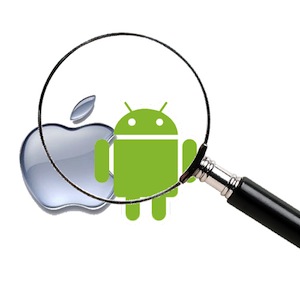Mobile Development Studio Tools

For developers of mobile applications, there are many services and web tools. Advanced companies and single developers are familiar with all these services firsthand. But a beginner can get confused and make the wrong choice. You can switch to another service without problems, but it’s cool to use the best and most convenient from the very beginning.
Our company uses many similar services and tools, so I decided to tell you briefly about the best of them. About basic things like Basecamp, GitHub, etc. there will be no speech, because these are not purely specific things for mobile development.
Let's go through design, server solutions, testing and analytics.
Design, prototypes, mocapas
Designing and typing an interface is one of the first steps in any development. The services below are easy to learn for both PM and the developer. The designer will most likely use his tools, perhaps Ps or OmniGraffle. An important component is also a discussion of layouts, especially when the team consists of remote employees.
Mocku.ps [Free] ( demo )
Everything is simple here: you upload a ready-made sketch and you can hang any local notes on it. There is no registration / authorization. Each new mocap is a link with a unique ID. Then it can be given to anyone - the recipient will have read-only mode.
MockingBird [from $ 9 / month] ( demo )
This service is already more advanced. Everything is there to create mockups from scratch. Suitable by the way and not only for the design of mobile interfaces.
Proto.io [Free or from $ 24 / month] ( demo ) A
sophisticated service for prototyping. The free version is for reference only. The expensive cost per month is offset by a really cool set of chips: we especially like the launch of dynamic prototypes on real devices to maximize tap-experiment.
Moqups [Free] ( demo )
A simplified version of proto.io, but free. A good set of stencils and a convenient feature are the connectedness of several screens via link buttons.
Server platforms (Push, Location, etc)
If the application is developed for a large customer or project, it is obvious that the entire server part will spin on one or more of its servers. If the project is not large, but you need to implement the functionality of Push notifications or data synchronization, then you should pay attention to the following services.
UrbanAirShip [Free, and then depending on requirements]
Urban has several products: these are Push notifications, Location tools, Passbook integration and more details. In the case of the Free tariff, you can test Push notifications in applications for free, just upload the bundle with server certificates to the control panel.
Parse [Free and from $ 199 / month]
Parse also has a good set of products: data storage, push notifications, social chips, code in the cloud. Free tariff provides a good set for deployment of Push-services. The guys flexibly select tariffs for you if you have some kind of non-standard set of indicators for accessing the API or the total number of push messages per month.
Testing and collecting kresh
TestFlight [Free].
Of course, everyone heard about TestFlight. De facto, this is the standard for delivering test builds to iOS devices. Free and extremely convenient. Recently announced that they are preparing and service / SDK for Android - we will wait.
BugSense [Free and from $ 19 / month]
Excellent service for collecting application crashes from different platforms. Everything is convenient, clear and affordable. Recently, analytics functionality has been introduced, but so far in beta, information is not always valid.
Crashlytics [Free, but through invite]
For iOS only, the Android version is still in development. A relatively fresh service, if I’m not mistaken, it was previously paid. Now the functionality of the Enterprise tariff is provided free of charge, but only upon an invite request. Extremely easy to integrate SDK, and crash reports are shown through the native OS X application. Everything looks too nice, sometimes infa is better than from BugSense.
Analytics
After the release of the application, it is extremely important to monitor its life cycle. There is a considerable number of analytical services for this. In addition to statistics on downloads, updates, ratings, etc., it is important to monitor user behavior in the application. This is necessary to understand the relevance of the application functions and for various marketing cases.
Flurry Analytics [Free]
This is a recognized leader in the analytics of your mobile product. Collect all the information that is possible. It makes no sense to list all the possibilities - you just need to take the SDK and integrate it into all the applications you release.
Localytics [Free and from $ 95 / month]
Similar Flurry, more attractive, the functionality is similar. I can’t tell you more details, have not yet been used to its fullest.
AppFigures , Distimo , AppAnnie
These three services analyze your sales directly. You connect your iTunes Connect and Google Play accounts to them and see graphs of downloads, reviews, ratings visually - compare all this with competitors, etc. Distimo offers paid chips like AppIQ, which compare your performance with competitors in more detail, and AppAnnie is simpler, but free.
Conclusion
I’m sure that if you recall all of these services and tools, you’ll get not an article, but already a full-fledged wiki database. If I have undeservedly missed some service that you think is more convenient or that you really love and want to share your feelings with us, then write about it in the comments.
